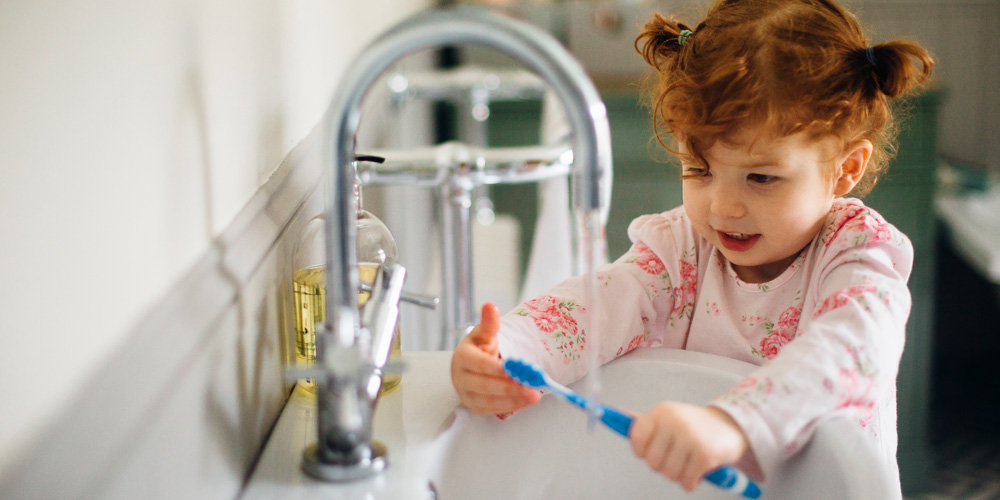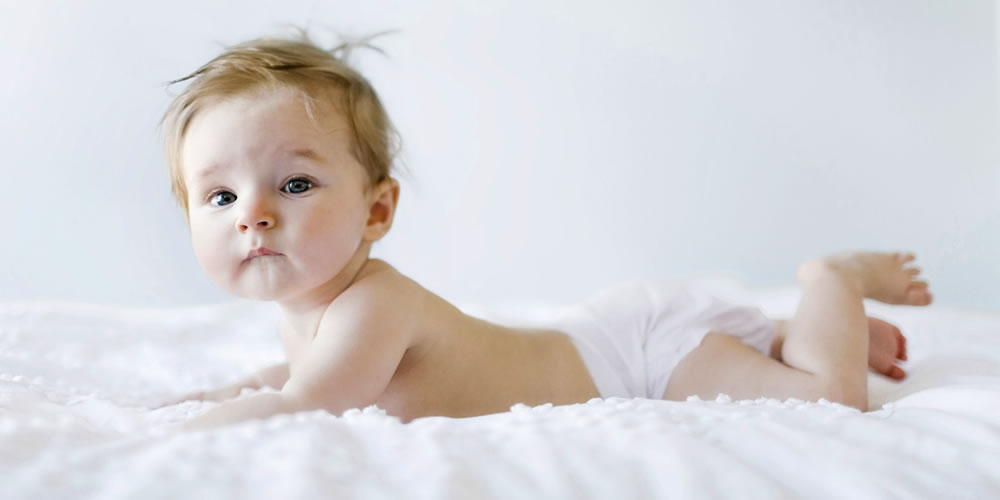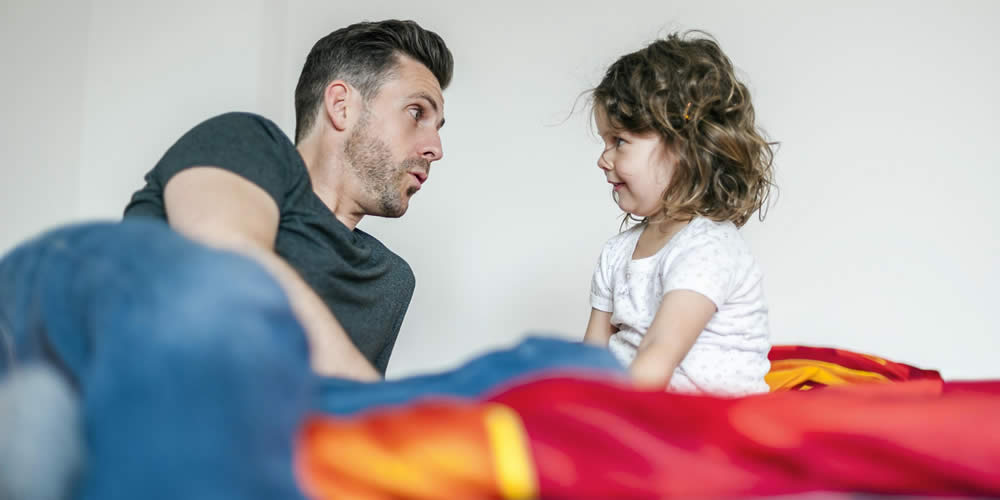Almost every seventh three-year-old child has tooth decay. How can parents prevent? A dentist explains it – and reveals why the normal manual toothbrush is best

Milk teeth should already be cleaned regularly
First the good news: Almost 80 percent of twelve-year-olds in Germany have caries-free teeth. Together with Denmark, Germany is internationally at the top with this value. This was the result of a study commissioned by the German Association for Youth Dental Care, for which over 300,000 children were examined nationwide.
And now the bad news: Only six percent of six to seven year olds have healthy teeth. And now the very bad news: Almost 14 percent of three-year-olds are already affected by tooth decay – right down to the dentine. For Prof. Dr. Ulrich Schiffner, dentist in Hamburg and training officer of the German Society for Pediatric Dentistry, is a clear sign that prevention for the little ones is simply too late. Good dental care is actually not that difficult. We asked the experts what is important.

When do you start brushing your teeth??
"As soon as the first Milk tooth has erupted", says Ulrich Schiffner. So from six months on. But the thing about dental care is easy to start with? Schiffner says no. The same recommendations apply to the little ones as to the adults: cleaning twice a day, morning and evening. "This allows you to establish a certain habituation early on", says the expert. This works best if you start a ritual early for brushing your teeth, i.e. fixed times. For example in the morning after getting dressed and in the evening before going to bed.
Finger cot, cotton swab or toothbrush?
"Only the toothbrush", Schiffner emphasizes. Because neither finger cots nor cotton swabs would be able to remove the plaque sufficiently. The cleaning effect is almost zero. When choosing a toothbrush, you should only make sure that it is age-appropriate. Up to the age of 24 months this means: a particularly small head, very soft bristles and a large handle so that the parents can hold the brush well. Even later, when a larger toothbrush is used to match the growing oral cavity, the main job of cleaning is still with the parents.
How to brush your teeth properly

First, the chewing surfaces are cleaned above and below. From back to front and back again.

Then place the teeth on top of each other and draw large circles on the outer surfaces.

Finally, the inner surfaces are on. Open your mouth wide. Clean the rubbers from red to white.
How do I brush my teeth??
"Best tooth by tooth with very gentle pressure and circular movements – and with a portion of children’s toothpaste the size of a rice grain", says Schiffner. From about 24 months it can be a pea size. Pediatricians and dentists are divided over whether fluoride-containing children’s toothpaste or fluoride tablets are more suitable for children in their first years of life. Important: never combine the two.
The dentist can guide parents when cleaning. From the sixth month of life, when the first milk teeth break through, parents can go to the dentist with their children and get advice on caries prevention. Between the sixth and the 34th month of life, the health insurance companies pay for three early detection examinations and the application of fluoride varnish twice a calendar half-year. Between the 34th month of life and the completed sixth year of life, three early detection examinations and the use of fluoride varnish are also covered by the health insurance companies.
How my child brushes his teeth?
In the first years of life, the toothbrush is used to scrub around in the mouth rather uncoordinated. This does not mean that the parents are better off taking care of the teeth entirely. First "dressing" the child’s teeth, then the parents brush them up. And it should stay that way for a while. "In the meantime, we recommend that parents clean up to the age of ten", says Ulrich Schiffner. Because the children are simply not able to remove plaque from all surfaces of their teeth.
Floss or not?
It depends on how close the teeth are to each other. According to Schiffner, a milk tooth set is very incomplete for a long time, so that the gaps can be easily reached with the toothbrush. If the teeth are closer together, you can use dental floss holders to clean the interdental space – ideally only after being instructed by the dentist, as you can injure the gums quickly.
Electric toothbrush or not?
"There is no compelling argument for an electric toothbrush", says Schiffner. It doesn’t remove plaque better or faster than a normal toothbrush. And for there is an argument: "It is good for motor skills. The child does something in the mouth and feels something in the head", Schiffner emphasizes.
Games for easier teeth brushing
Depending on the age, different games also help. Rhymes distract younger deniers, for example:
- Brushing your teeth, brushing your teeth – every child has to do that. Brush your teeth, brush your teeth – until they are clean.
- Ritsche, ratchet, back and forth, brushing your teeth is not difficult. Circles, circles, all around, brushing your teeth is not stupid. We sweep, we sweep, the crumbs all have to get out.
- Or a toothbrush song (melody: a little man is standing in the forest): We brush our teeth from red to white. We always run our brush in a circle. In the morning, when I get up early, in the evening when I go to bed, I brush my teeth as white as snow.
Or: give animal names to the teeth ("Now we brush the mouse teeth in the front, the bear tooth looks out from behind"). To do this, turn on your favorite song or run an egg timer so that you really clean for two to three minutes.
Parents could also hold a competition with older children: who can clean the longest without spitting out? And when the family starts the caries fight together after meals, this is of course particularly motivating.
RELATED ITEMS
-

When should the child see a specialist? Baby and family
In addition to the pediatrician, ear, eye or dentist care for small patients. When does the examination at the specialist make sense? Also…
-

What if the child doesn’t want to go to daycare? Baby and family
Yesterday the child happily went to crèche or kindergarten, today there is protest and roar. What is behind it? Today: thumbs down for that…
-

Language training: when is therapy necessary? Baby and family
Lispel, stuttering, selective mutism – more and more children have speech disorders and receive speech therapy. The Munich explains the background…
-

Proper communication with children – baby and family
Sometimes tots do exactly the opposite of what you expect them to do. In five situations we show how to communicate with…
